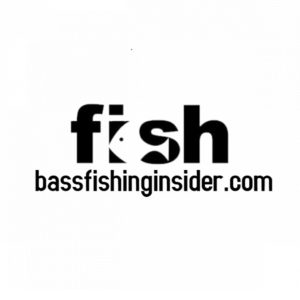
Monofilament, Braid, Fluorocarbon. 8, 12, 30, 65-pound test. Red, black, green, yellow, and more. What’s the real deal with these fishing line choices and variations in size and color?
I’ll start my discussion with the three main types of lines to consider: braid, monofilament, and fluorocarbon. Each has its uses. Choosing the right fishing line is crucial for bass fishing success. Explore top-rated bass fishing lines to find the perfect match for your needs. Check out our chart below to get a feel for the best fishing line for bass fishing.
| Monofilament | Budget-friendly option. Stretches most. Floats so can be good for topwater baits. Not great when a strong hook set is needed, but stretch may allow for a better grip with moving baits. |
| Fluorocarbon | Resists abrasion, not as visible to fish. Excellent choice in clear water. Does not float in water. Good for soft plastics. |
| Braid | Strongest line. Does not stretch. Is more visible to bass. Great for use in thick cover where line abrasion is possible, and a strong hookset is needed. Good for punching, flipping, etc. |
Curious about fishing jargon? Our comprehensive terminology guide breaks down everything you need to know.
Does it Matter Which Fishing Line You Use for Bass Fishing? What’s the Difference?
Fishing lines differ for a variety of reasons. Choosing the right fishing line for your baitcaster or spinning reel does matter for bass fishing. Each of the four factors below warrants consideration when deciding on the type of line to use for bass fishing. It’s vital that you match the lure type and conditions to the line type for the best bass fishing success.
- Strength — Important for fishing in thick cover.
- Underwater Visibility — Critical for clear water bass fishing and/or finesse techniques.
- Floatability — An essential consideration for topwater fishing.
- Stretch — Deserves mention in relation to hooksets and moving bait fishing.
- Sensitivity — Some lines are more sensitive than others allowing you to detect bites easier.
Best Type of Fishing Line for Bass. A Complete Guide.
| Strength | Visibility | Floatability | Sensitivity | Stretch | |
| Monofilament | Low | Average | Average | Low | High |
| Fluorocarbon | Average | Low | Low | High | Average |
| Braid | High | High | High | High | Low |
Below, you’ll see a complete discussion of the three major lines for bass fishing.
Fluorocarbon (Fluoro) for Bass Fishing
Is Fluorocarbon Good for Bass Fishing?
Advantages of Fluorocarbon
- Castable.
- More durable than mono. Resistant to nicks from reeds, wood, rocks, etc.
- Virtually invisible to bass. Best for clear water.
- Sinks faster than mono which can be an advantage or disadvantage.
- Less stretch than mono can be both good and bad depending on the bait or lure in use.
Disadvantages of Fluorocarbon
- Expensive.
- Sinks faster than mono which can be an advantage or disadvantage.
- Less stretch than mono can be both good and bad depending on the bait or lure in use.
- More difficult to use.
- More “backlashing.”
What Lures to Use With Fluorocarbon?
Since it is virtually invisible to fish underwater, fluoro is an excellent option for fishing with any finesse bait, especially when using a spinning reel for bass fishing with baits like drop shot rigs, wacky rigs, and shaky heads. It’s also good for fishing with most soft plastics like Texas rig worms.
Fluorocarbon sinks, so it is not the best choice for topwater baits like poppers and prop baits., However, for subsurface hard plastics like jerkbaits and crankbaits, it does work well because the line does not float.
Finally, fluorocarbon is practically a must in clear water.
For clear water conditions, fluorocarbon lines like Berkley Vanish Fluorocarbon offer low visibility and excellent sensitivity.
Fishing with Braid for Bass
Is Braided Line Good for Bass Fishing?
Advantages of Braid
- Toughest, most durable line.
- Does not stretch (both a pro and con).
- Floats which can be both bad and good.
- Excellent for leverage and power.
Disadvantages of Braid
- Expensive.
- Most visible to bass.
- Floats which can be both bad and good.
What Lures to Throw on Braid?
Braided line is the go-to line for use on a baitcaster in thick grass, weeds, reeds, hyacinths, and other vegetation because it is tough, durable, and abrasion-resistant. Braid can also work to “cut” through some heavy cover as you reel your bait or lure back in.
In dark water or heavier vegetation where the fish can’t get a good, clean look at your presentation, braid works well for most soft plastics. I also like it for topwater because it floats and allows me to make risky casts into thicker areas of cover, knowing that I have braid on to horse the fish out or tear my lure away if I get it stuck.
If you are fishing with punch baits in matted vegetation or otherwise flip soft plastics, braid is almost a requirement so that you have the “pop” needed to set the hook and get the fish out of and away from thick cover fast.
Braided lines are known for their strength. PowerPro Spectra Fiber Braided Fishing Line is a top pick for heavy cover situations.
Monofilament (Mono) for Bass Fishing
Is Monofilament Good for Bass Fishing?
Advantages of Monofilament.
- Excellent castability.
- Floats which can be both bad and good.
- Great for new anglers.
- Easy to use. Easy to tie knots and work with.
- Inexpensive
- Stretches (can be an advantage or disadvantage depending on the application).
Disadvantages of Monofilament.
- Not as durable. It May break easier than other lines.
- Stretches (can be an advantage or disadvantage depending on the application).
- Fish can detect it underwater.
- Floats which can be both bad and good.
- Not good where leverage or power is needed.
What Lures to Use With Monofilament?
Monofilament is probably the most popular line for most topwater applications because it floats.
Additionally, many people prefer mono for lures with treble hooks because they feel like they get a better hookset due to the stretch of mono. Anglers also like the monofilament stretch because they think it allows fish to pull and thrash around without as much risk of the fish shaking off because the line “gives” a little during the fight.
Many people also like monofilament for moving baits because they feel that the hookup ratio is higher, once again, because of the line give. Monofilament lines are budget-friendly and offer good stretch. Berkley Trilene XL Monofilament is a reliable choice for many anglers.
Line Choices for Different Lures and Bait
| Monofilament | Fluorocarbon | Braid | |
| Texas rig | |||
| Topwater |  |  | |
| Crankbait |  | ||
| Buzzbait |  |  | |
| Drop shot |  | ||
| Shaky head |  | ||
| Chatterbait |  | ||
| Swim jig |  |  | |
| Punch Bait |  | ||
| Jerkbait |  | ||
| Frog |  | ||
| Spinnerbait |  |
What is the Best Pound Test for Bass Fishing?
There are several variables to consider when choosing the best pound test line for bass fishing, but if I had to choose one, I would say that:
The best-pound test line for bass fishing is a 17-pound test fluorocarbon. At this size, the line is still small enough to maintain good castability, stays relatively invisible, and is strong enough to catch virtually any bass. The line will also be durable enough to resist nicks and abrasions from cover.
The following questions should be taken into consideration before you can determine how heavy your line should be:
- Light Penetration
Generally speaking, when bass have a better chance of seeing your lure or bait, choose a lighter-pound test line. In other words, go with a smaller line in high-light penetration settings like clear water.
In dark water, you can usually get away with a thicker line because fish can’t see as much with less light penetration.
- Cover
Simply put, as vegetative cover gets thicker, use heavier line.
- Retrieval Style
The faster you move your lure, the less time bass have to see it. Slower baits allow bass to get a good look. You can usually get away with a heavier line for bass fishing with faster-moving presentations.
Also, understand:
- 15-pound mono will not be as strong as 15-pound braid. Each line has a different tensile strength.
- Pound test ratings reflect the diameter of a line. Higher-pound test lines will be thicker than lower-pound test fishing line. With increased thickness comes strength, but you’ll also sacrifice some castability.
Insider Tip: Not sure what line to pair with different baits or techniques? Check out our guide on ultralight gear setups for help tuning your line to finesse tactics.
Can Bass See Fishing Line?
Bass can see fishing line. Line color becomes more relevant to bass’ eyes in clear water and other situations where light penetration is high. Bass are also more likely to detect fishing line color with baits or lures that require slower retrieval because fish have more time to examine the line.
Using a fluorocarbon line in these situations is advisable because it is virtually invisible underwater. However, in low light settings or faster retrieval situations, bass do not see line as well.
Best Color Fishing Line for Bass
Line color matters for bass, especially when bass have a greater opportunity to see the line like in clear water or with slower-moving baits like finesse presentations.
Although there are many different opinions, the discussion about fishing line color for bass can be summed up in the following three points:
- Light penetration is the number one factor to consider when choosing line color. When light reaches farther into the water because of bright skies, clear water, or little vegetation, the color of your line for bass fishing becomes more critical because you don’t want to spook fish. Therefore, choose a “clear” fluorocarbon line in these situations as much as possible.
- Line color is less important with reaction-style baits. When you’re fishing with lures designed to elicit a strike based on the impulsivity of bass, line color loses relevance. Fish don’t have as much time to examine baits and lures, so the color of your fishing line is less of a factor.
- A colored line helps with bite detection. I was once pre-fishing a tournament with one of my boys on the Harris Chain in Florida. The bite was tough, so we worked wacky-rigs near and under docks. I was using fluoro while he opted for a yellow braid with a fluorocarbon leader (the leader portion was not visible to fish because of the nature of fluoro line). My son had a much easier time seeing his line move or tick with a bite than I did. The result was more fish in the boat for him.
Common Line Mistakes Bass Anglers Make
Even if you pick the right line type, how you use it matters. These are some of the most common errors:
- Using mono for deep diving crankbaits (too much stretch)
- Running braid straight to the hook in clear water
- Spooling fluorocarbon too tight or overfilling spinning reels
Fixing these little things can make a huge difference in hookup ratio and casting control.
How Long Does Fishing Line Last?
Fishing line breaks down faster than most people realize—especially if you’re on the water often or store your gear in heat or sunlight. Even if it looks fine, line can weaken over time from use, stretch, or exposure. If you’re starting a new season, switching techniques, or noticing memory coils and casting issues, it’s a good idea to re-spool. Fresh line means fewer surprises when it counts.
The Bass Line. Final Word
What’s the bass bottom line?
Browsing online or walking down the tackle store aisle to choose a fishing line for bass can be extremely overwhelming if you don’t keep things in perspective.
Maintain simplicity. Consider light penetration, cover and lure or bait choices and how they all work and interact together. Also, be sure to take a minute to pick the best pound test and give consideration to color.
Selecting the right fishing line enhances your bass fishing experience. Browse a wide selection of fishing lines to find the one that suits your style.
Now, spool up your line of choice and wet a line!
Go get ’em!
Related Questions
What Kind of Line do Pro Bass Fishermen Use?
Pro bass fishermen use three kinds of lines: braid, fluorocarbon, and monofilament. They use braid for heavy cover. Professional bass anglers choose fluorocarbon for subsurface moving baits, clear water, or finesse situations. Finally, they use monofilament for some topwater presentations.
Affiliate Disclosure:
Some of the links in this post may be affiliate links. If you make a purchase through them, we may earn a small commission at no extra cost to you.




